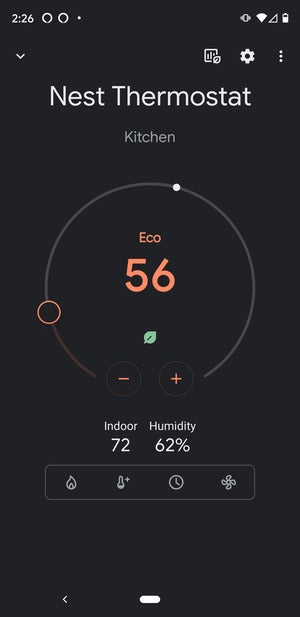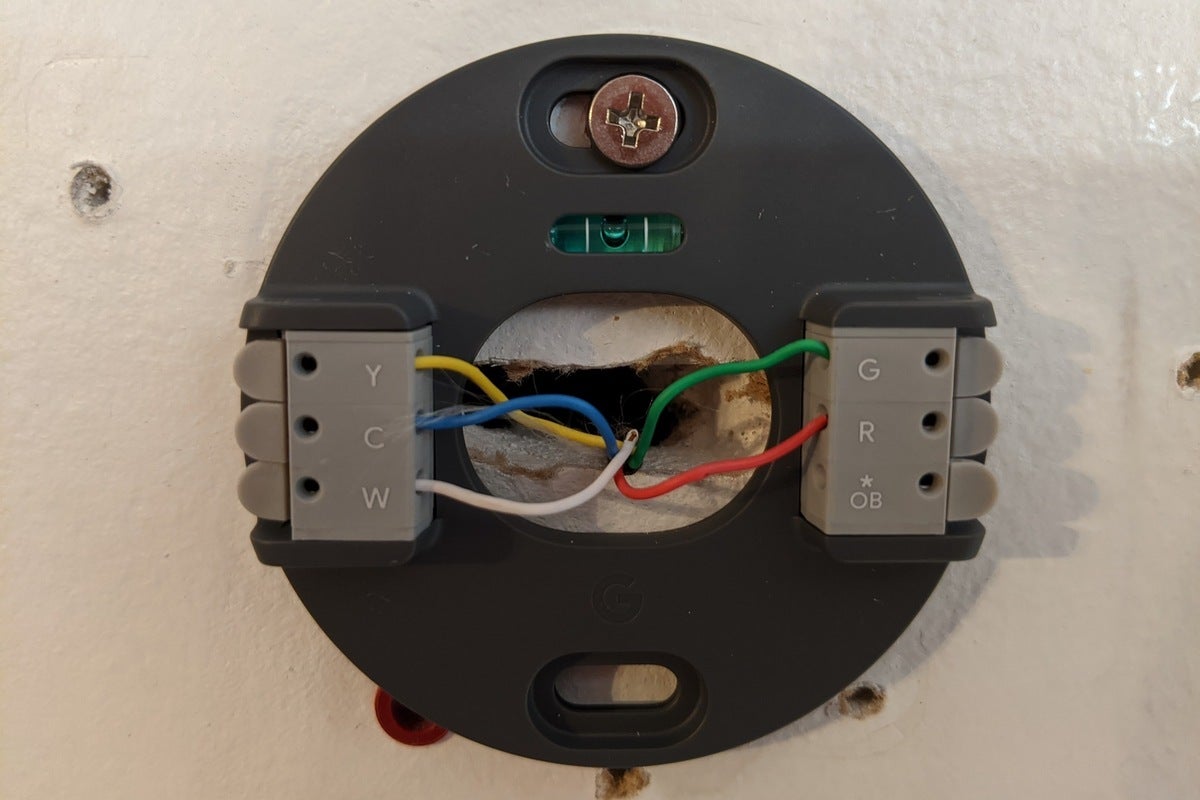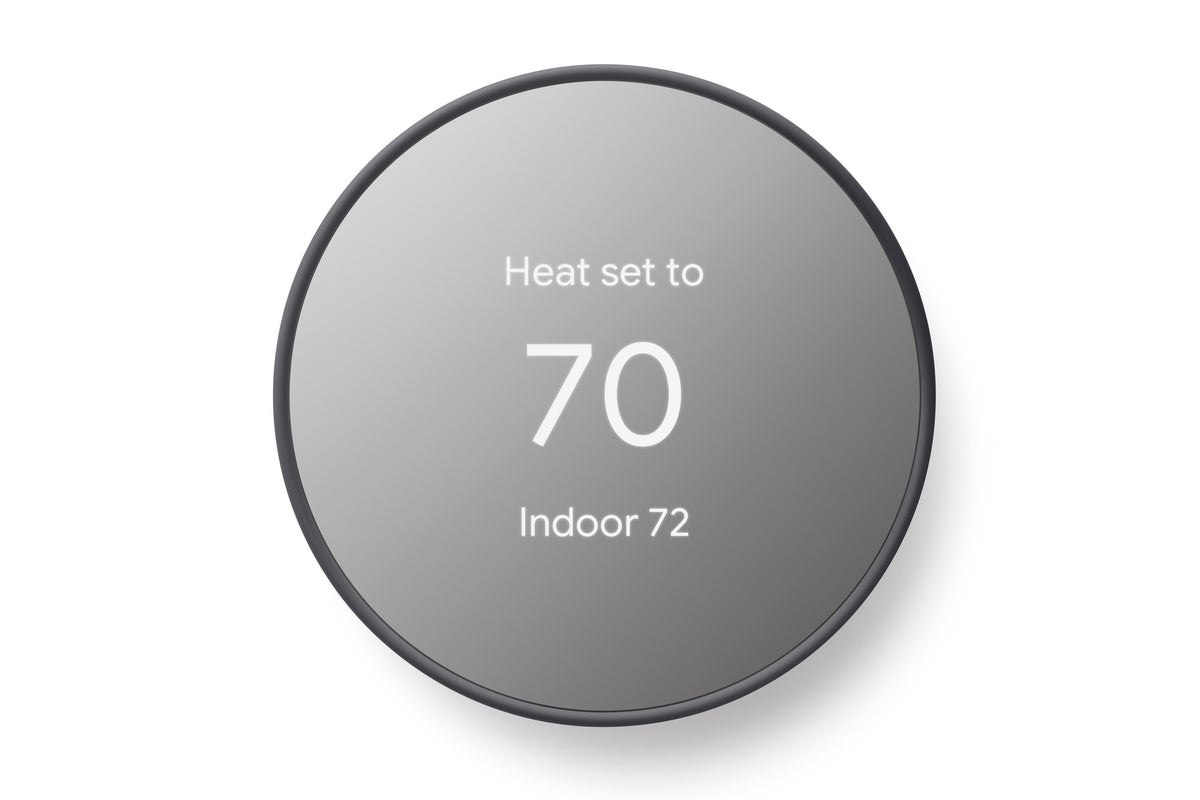Most of the features we love about the top-of-the-line Nest Learning Thermostat—at almost half the cost.
Google
Today’s Best Tech Deals
Picked by TechHive’s Editors
Top Deals On Great Products
Picked by Techconnect’s Editors
It’s hard not to like a Nest Thermostat, but as the folks at Google learned over the years, the primary reason people cite for not buying one is they’re too expensive. That changes with this latest model. It’s not as slick or sophisticated as the top-of-the-line Nest Learning Thermostat, but it carries enough of that device’s DNA to be an excellent value at $130. In fact, it’s our new top pick in the budget category.
Buy one and you’ll get the familiar round form factor, a bright display with sharp visuals, and the ease of installation and day-to-day use that made the original product such as star. You’ll adjust your HVAC system’s target temperatures and the new Nest Thermostat’s various settings using its outer ring, too. But instead of spinning a mechanism, you’ll slide and tap your fingertip on the responsive touch-sensitive surface of the thermostat’s outer bezel. Unlike the plastic lens on the Nest Thermostat E, the Nest Thermostat has a genuine glass face.
This review is part of TechHive’s coverage of the best smart thermostats, where you’ll find reviews of competing products, plus a buyer’s guide to the features you should consider when shopping for this type of product.
While this new model won’t program itself, it will use its onboard motion and humidity sensors as well as geofencing (based on your smartphone’s location and its dual-band Wi-Fi adapter) to suggest presets for when you’re home, home sleeping, and away. If everyone with a smartphone leaves the house, but your kids (or anyone else without a smartphone) stay, the occupancy sensor will continue to keep your home comfortable—provided someone walks past the thermostat every once in a while.
 Jason D’Aprile / IDG
Jason D’Aprile / IDGThe user interface in the Google Home app mirrors the Nest Thermostat’s physical display.
The thermostat will also offer suggestions for how you can save energy. The device trims its own energy consumption by dimming its mirror-like display until you approach it, at which time its user interface will float to the surface.
Unlike the higher-end Nest thermostats, however, this budget-priced model won’t recognize Nest’s remote sensors. That means it will run your HVAC system to heat or cool until the temperature where it’s installed—which is often in a random hallway—reaches your desired target. More sophisticated smart thermostats—including our top pick in this category, the $249 Ecobee with voice control—can eliminate hot and cold spots by taking into account readings from sensors installed in several rooms in your home.
Easy as ever
Nest set a high bar for ease of installation with its original thermostat, and this new model doesn’t disappoint on that score. It will accept a C-wire to provide power to the thermostat itself, if there’s one in your wall, but it doesn’t necessarily depend on it (it does need two AAA batteries). This Nest Thermostat is, however, designed for simpler HVAC systems and has just six sockets on its wiring block: Y (for air conditioning, stage 1), C (aka “common,” for power to the thermostat itself—if needed), W (for heating, stage 1), G (for fan operation), R (for power), and OB* (for a heat pump or a dehumidifier). If your HVAC system has second-stage heating and/or cooling or is otherwise more complex than that, this thermostat won’t work with it. That said, it will be compatible with most systems, including multi-zone systems (Google claims 85 percent of 24-volt systems).
The new Nest Thermostat is relatively tiny at 3.5 inches in diameter, which could leave it encircled by unsightly holes in the wall when you remove your old thermostat. Google will happily sell you a $15 backplate to cover those up if you don’t want to take the time and effort to spackle and paint over them.
 Jason D’Aprile
Jason D’AprileGoogle says the Nest Thermostat should be compatible with 85 percent of HVAC systems, but the six wiring sockets visible here will tell about the remaining 15 percent.
Nest says a new monitoring feature will alert you when your HVAC system might need maintenance or repair. If the temperature is dropping while the furnace is supposed to be running, for example, or the temperature continues to rise despite the air conditioner being on, you’ll get an alert in the app. You’ll also get maintenance reminders when it’s time to replace your air filters and when you should have a service tech come out for routine maintenance (these reminders are based on run time, not just the calendar). And as you’d expect from a Google product, the app will connect you with a local HVAC pro if you don’t already have one in your contact database.
Google is wisely centralizing all its smart home products in the Google Home app (the ones it still has, that is, since it has stopped building its Nest Secure home-security system). That means you’ll no longer need the Nest app to set up or control its smart thermostats. You can also control the thermostat with voice commands using either Google Assistant or Amazon Alexa.
 Google
GoogleA color-matched backing plate can be had for $15 if you don’t want to patch and paint the wall after you remove your old thermostat.
Bottom line
If you want a great-looking, easy-to-use, affordable smart thermostat, the new Nest Thermostat is easy to recommend. It’s attractive, well built, and priced low enough that your local utility might even reimburse you for a big chunk of its cost—especially if you also sign up for a time-of-use rate that encourages energy consumption outside of peak-demand hours. (Actually, utility rebates are designed to encourage you to buy any brand of smart thermostat.)
The Nest Thermostat would be even easier to recommend if it supported Nest’s remote sensors, though that would add to its cost (Nest’s sensors cost $39 each). While the competing Ecobee3 Lite supports that company’s remote sensors, it’s a little more expensive than the Nest Thermostat (and its sensors cost $79 for a two-pack).
Note: When you purchase something after clicking links in our articles, we may earn a small commission. Read our affiliate link policy for more details.
The all-new and budget-priced Nest Thermostat is easy to recommend, but it would be an even better value if it supported Nest’s remote sensors.
Pros
- Attractive industrial design, available in four colors
- Very easy to install, program, and use
- Monitors your HVAC system for potential problems
- Energy Star certified
Cons
- No support for remote room sensors
- Not suited to more complex HVAC systems
- Backplate for covering holes from previous installations is a $15 option
Jason D’Aprile has been writing about technology and entertainment since the early 90s from his secluded home in West Virginia.


